NCERT Class 9 Maths Chapter 3 Notes – Coordinate Geometry (PDF Download)
Coordinate geometry is the study of geometrical figures that link algebra and geometry by defining points on the axes. The other name of coordinate geometry is analytic geometry or Cartesian geometry. Coordinate geometry helps to determine the distance between two points on the coordinate axes. Coordinate geometry is the study of algebraic equations on a graph. Coordinate geometry is used in many areas, such as determining the distance between two places to determine the area of a triangle in the Cartesian plane, determining the midpoint of a line, in GPS, determining the longitude and latitude, forecasting, storms' exact location, etc. The primary benefit of these NCERT notes for class 9 Maths is that they present concepts clearly and straightforwardly, making learning easier and more effective.
This Story also Contains
- Class 9 Coordinate Geometry Notes PDF – Download Free Study Material
- NCERT Class 9 Maths Chapter 3 Coordinate Geometry Notes
- Cartesian System
- How to Use the Coordinate Geometry Class 9 Notes Effectively?
- Coordinate Geometry Class 9 Notes: Previous Year Question and Answer
- NCERT Class 9 Maths Notes – Chapter-Wise Links
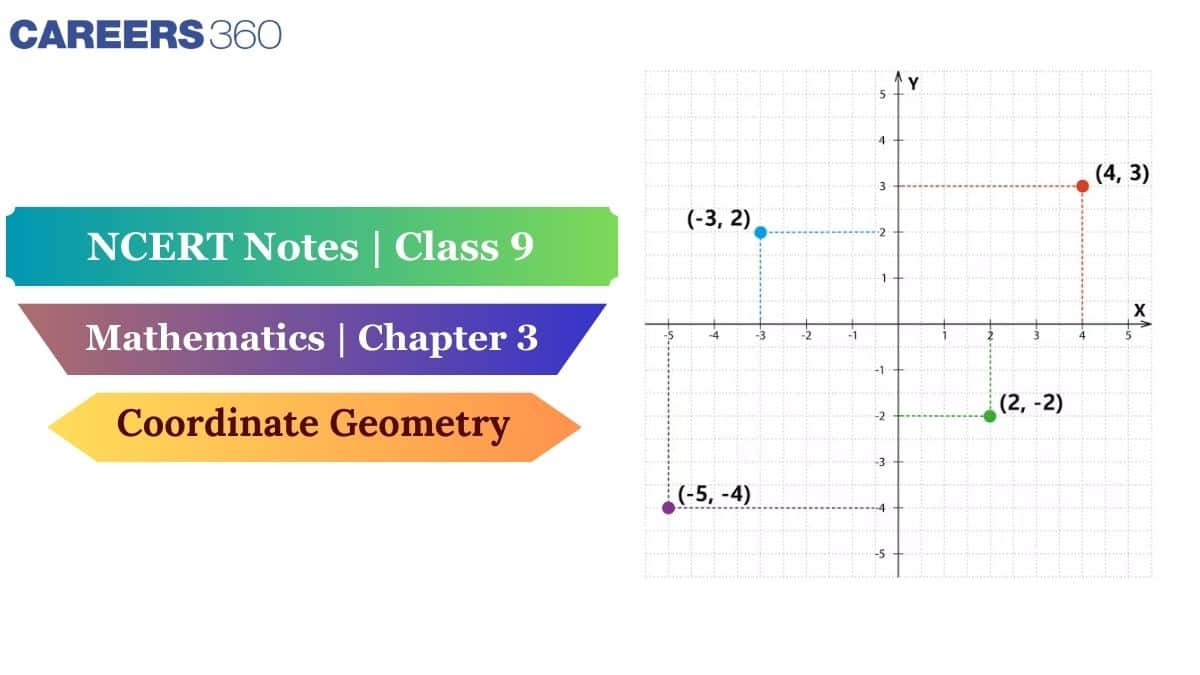
These notes included the definition of coordinate geometry and the Cartesian system. What are the origin, coordinate axes and quadrants? How to plot points and make a line on a graph? Everything will be clearer after reading these notes. These NCERT notes are trustworthy and reliable, as they are created by subject matter experts at Careers360, making them an essential resource for exam preparation. Explore NCERT Books, Solutions, Syllabus, and Exemplar Problems with Solutions for complete syllabus coverage in this NCERT article.
Also, read,
Class 9 Coordinate Geometry Notes PDF – Download Free Study Material
Careers360 brings you NCERT Class 9 Maths Chapter 3 Coordinate Geometry notes, carefully prepared by subject experts to simplify your studies and help in exams. A downloadable PDF is available — click the link below to access it.
NCERT Class 9 Maths Chapter 3 Coordinate Geometry Notes
Coordinate Geometry: It is an analytical geometry that is used for defining the exact position of a point using coordinates.
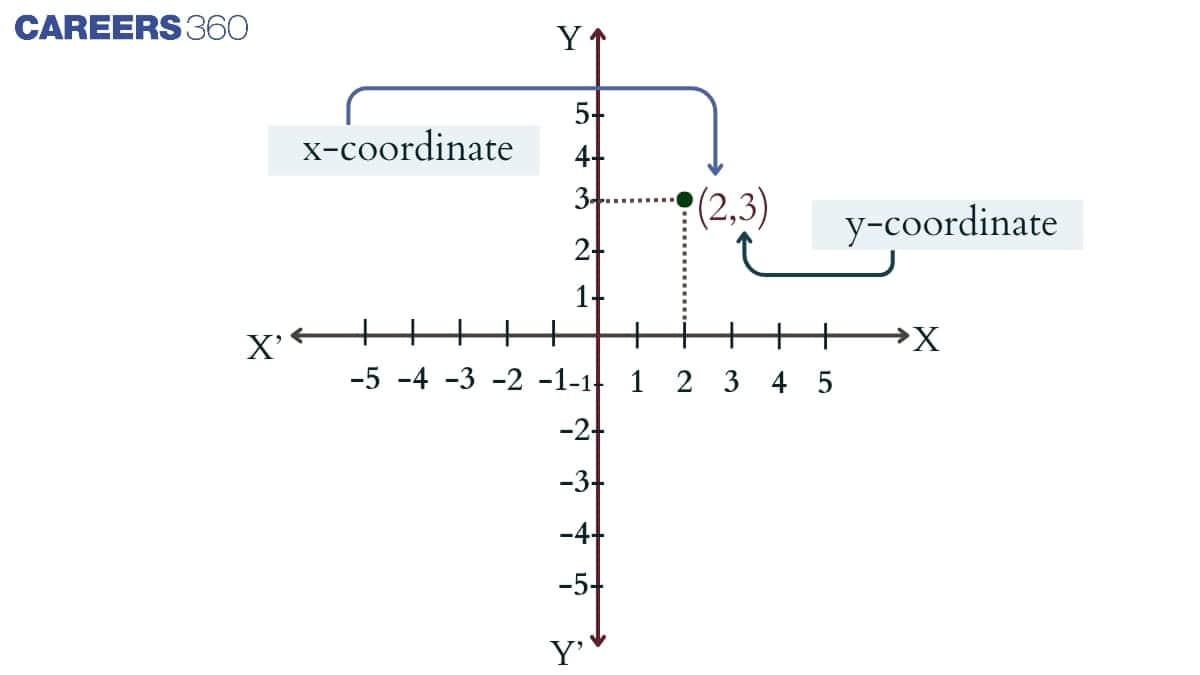
Cartesian System
The Cartesian system is a method of defining the position of a point in a plane. In this method, points are located using two perpendicular lines. In the Cartesian system, the horizontal line is called the X-axis and it is represented by XX', and the vertical line is called the Y-axis and it is represented by YY'.
Origin
The place where the two perpendicular lines of the X-axis and the Y-axis intersect is called the origin, and it is denoted by the letter $O$. This origin divides the line into positive and negative directions as OX and OY are called the positive direction, and OX' and OY' are called the negative direction of the graph.
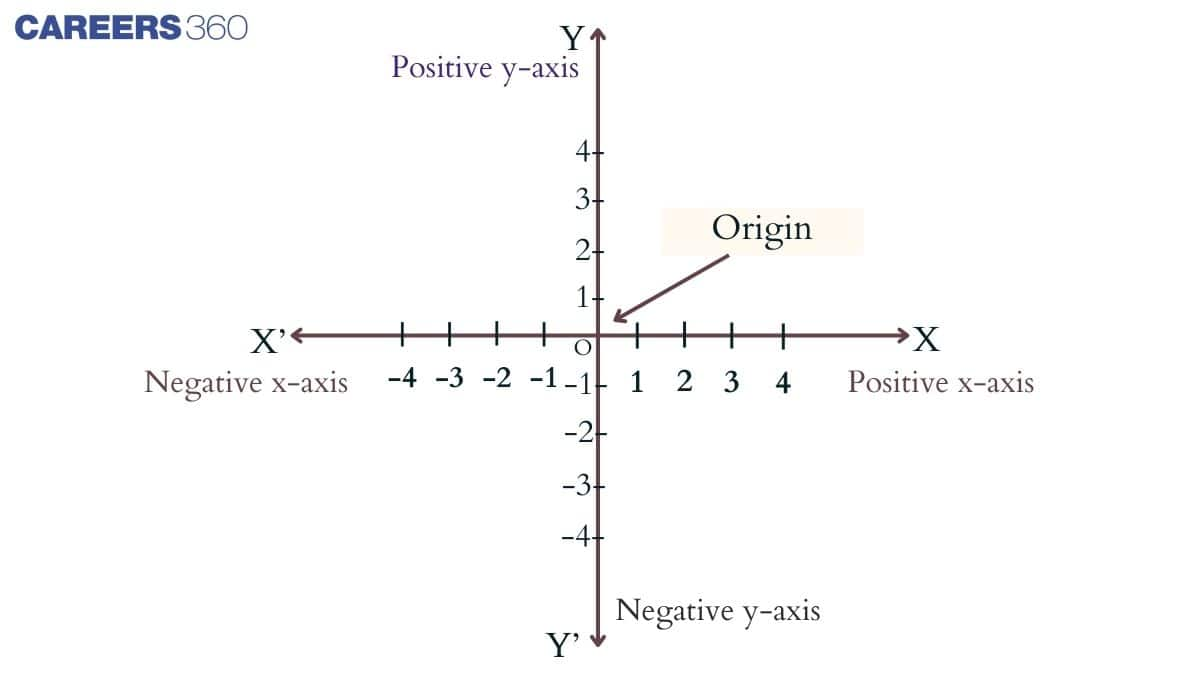
Coordinate Axes and Quadrants
The origin divides the plane into four sections, and these sections are known as quadrants. Quadrants are numbered as I, II, III and IV in an anticlockwise direction starting from the top right section. The plane where these quadrants exist is called the Cartesian plane, coordinate plane or XY plane and the axes on this Cartesian plane are called coordinate axes.
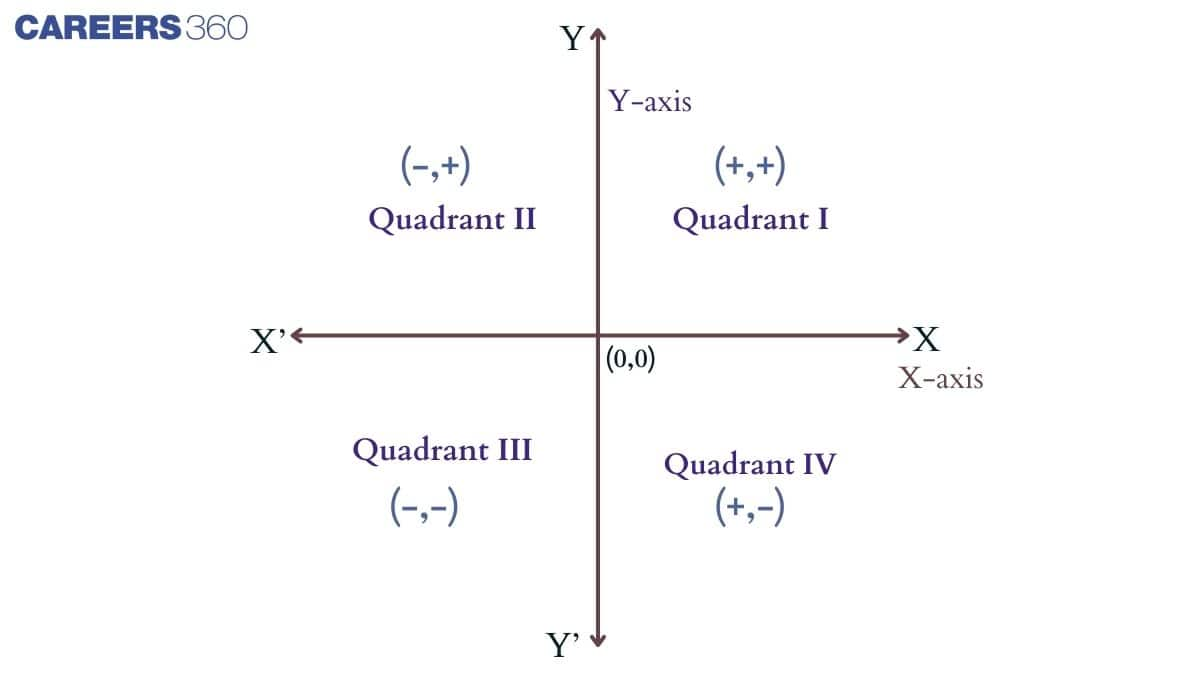
Points in Different Quadrants
The four quadrants in the XY plane are as follows,
Quadrant I: It is represented by (+, +) signs, which means X and Y are both positive.
Example: (2, 7)
Quadrant II: It is represented by (–, +) signs, which means X is negative and Y is positive.
Example: (-3, 4)
Quadrant III: It is represented by (–, –) signs, which means X and Y are both negative.
Example: (-4,-4)
Quadrant IV: It is represented by (+, –) signs, which means X is positive and Y is negative.
Example: (1, -9)
Plotting on a Graph
On the plane, a set of numbers or coordinates is given to define the position of the point in the XY plane, and these coordinate points are represented by an ordered pair of (x, y) where, X or distance from origin to X axis is called abscissa or X-coordinate and the distance from O to Y axis is called the ordinate or Y-coordinate as shown in figure.
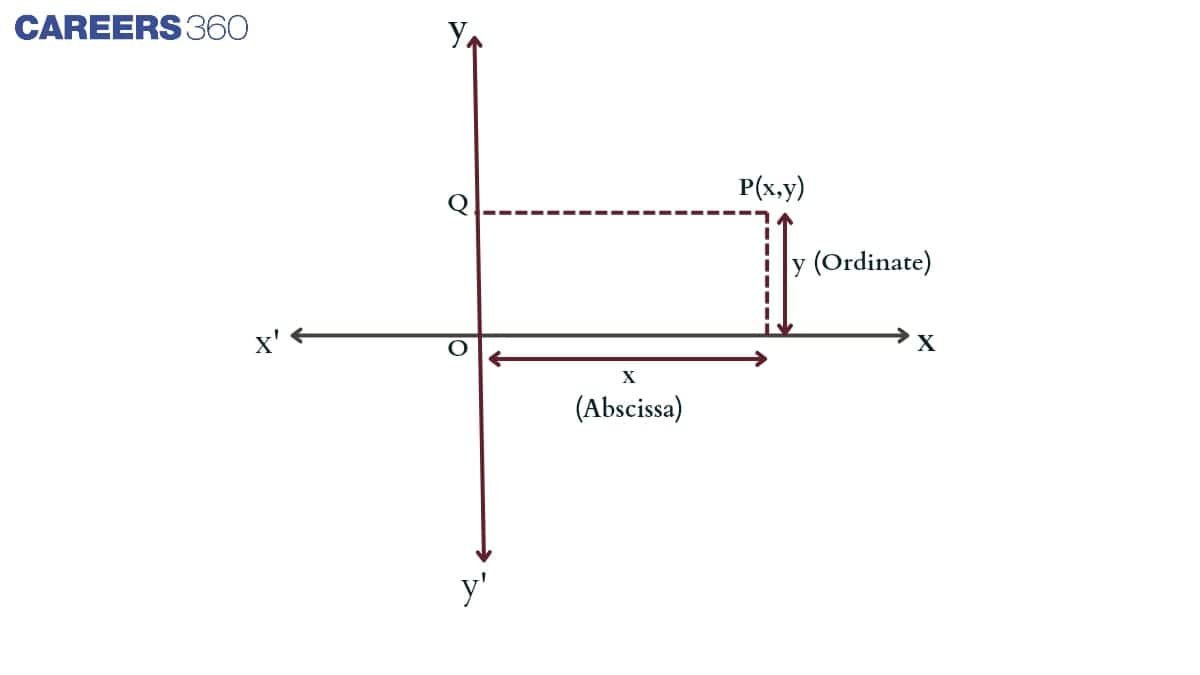
Plotting a Point in the Plane if Its Coordinates Are Given
In the coordinate plan, the X-coordinate implies that the distance from the origin to the X-axis and the Y-coordinate implies that the distance from the origin to the Y-axis. These points can be:
Example: Plot the coordinates (1, 2), (2, -4), (-3, 4) and (-2, -2) in the Cartesian plane.
Here,
(1, 2)→It is 1 unit away from the positive y-axis and 2 units away from the positive x-axis.
(2, -4)→It is 2 units away from the positive y-axis and 4 units away from the negative x-axis.
(-3, 4)→It is 3 units away from the negative y-axis and 4 units away from the positive x-axis.
(-2, -2)→It is 2 units away from the negative y-axis and 2 units away from the negative x-axis.
The plotting of these coordinates is shown in the figure:

How to Use the Coordinate Geometry Class 9 Notes Effectively?
Coordinate Geometry is an important chapter not only in class 9 but also in higher classes. It becomes easier when we understand how points are placed on the plane. This chapter in Class 9 primarily introduces the basics of the Cartesian system. Class 9 Maths Chapter 3 notes make learning even easier. Here are some more points on how these notes are important.
- First, read the basics of the Cartesian system and understand how to plot points before trying any exercise questions.
- Make small sketches and practise placing points on the graph so we remember the rules clearly.
- Keep the NCERT Class 9 Maths Chapter 3 notes with us while solving problems to check steps and avoid common mistakes.
- Use these NCERT Class 9 Maths Chapter 3 notes to build a strong base, because these ideas help us later in higher classes when we learn distance, section formula, and graphs.
Coordinate Geometry Class 9 Notes: Previous Year Question and Answer
Given below are selected previous year question answers for NCERT Class 9 Maths Chapter 3 Coordinate Geometry, collected from various examinations.
Question 1:
Find the coordinates of the points where the graph $57x – 19y = 399$ cuts the coordinate axes.
Solution:
$57x-19y=399$
⇒ $\frac{57x}{399}-\frac{19y}{399} = 1$
⇒ $\frac{x}{7}-\frac{y}{21} = 1$ -------------(i)
Comparing it with the equation of a line:
$\frac{x}{a}+\frac{y}{b} = 1$
x-intercept = $a$ = 7
y-intercept = $b$ = –21
The line, $57x-19y=399$, cuts the x-axis at (7, 0) and the y-axis at (0, –21)
Hence, the correct answer is 'x-axis at (7, 0) and y-axis at (0, –21)'.
Question 2:
The graph of the equation $x=a(a \neq 0)$ is a_____.
Solution:
Given: $x=a(a \neq 0)$
A diagram that shows the change of one variable to one or more other variables, such as a collection of one or more points, lines, line segments, curves, or regions.
The value of $x$ = The value of $a$ = 1, 2, 3, and so on to infinity.
The value of $y$ = constant (assume $y=4$)
As a result, the graph these points create will be a straight line parallel to the y-axis.
Hence, the correct answer is a line parallel to the y-axis.
Question 3:
At what point does the line $3x+y=-6$ intercept the x-axis?
Solution:
At an x-intercept, y = 0.
So, 3x + 0 = – 6
Solving for x,
⇒ 3x = – 6
⇒ x = – 2
So, the required intercept point = (–2, 0)
Hence, the correct answer is (–2, 0).
NCERT Class 9 Maths Notes – Chapter-Wise Links
For students' preparation, Careers360 has gathered all Class 9 Maths NCERT notes here for quick and convenient access.
|
NCERT Notes for Class 9 Maths Chapter 3 Coordinate Geometry |
|
NCERT Notes for Class 9 Maths Chapter 4 Linear Equations in Two Variables |
|
NCERT Notes for Class 9 Maths Chapter 5 Introduction to Euclid’s Geometry |
|
NCERT Notes for Class 9 Maths Chapter 11 Surface Areas and Volumes |
NCERT Solutions for Class 9
Students must check the NCERT solutions for Class 9 Maths and Science given below:
NCERT Exemplar Solutions for Class 9
Students must check the NCERT exemplar solutions for Class 9 Maths and Science given below:
NCERT Books and Syllabus
To learn more about the NCERT books and the latest syllabus, read the following articles and get a direct link to download them.
Courses After 12th
Applications for Admissions are open.
As per latest syllabus. Physics formulas, equations, & laws of class 11 & 12th chapters
JEE Main Important Chemistry formulas
Get nowAs per latest syllabus. Chemistry formulas, equations, & laws of class 11 & 12th chapters
JEE Main high scoring chapters and topics
Get nowAs per latest 2024 syllabus. Study 40% syllabus and score upto 100% marks in JEE
JEE Main Important Mathematics Formulas
Get nowAs per latest syllabus. Maths formulas, equations, & theorems of class 11 & 12th chapters
